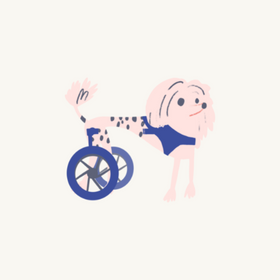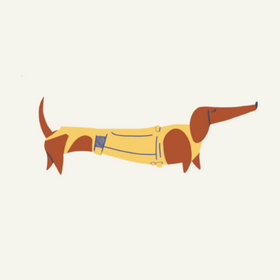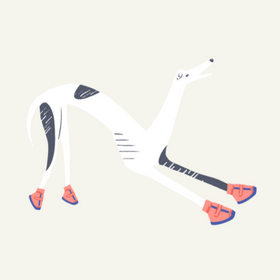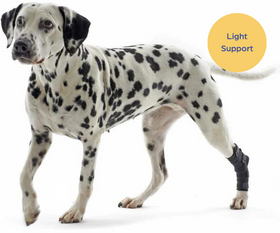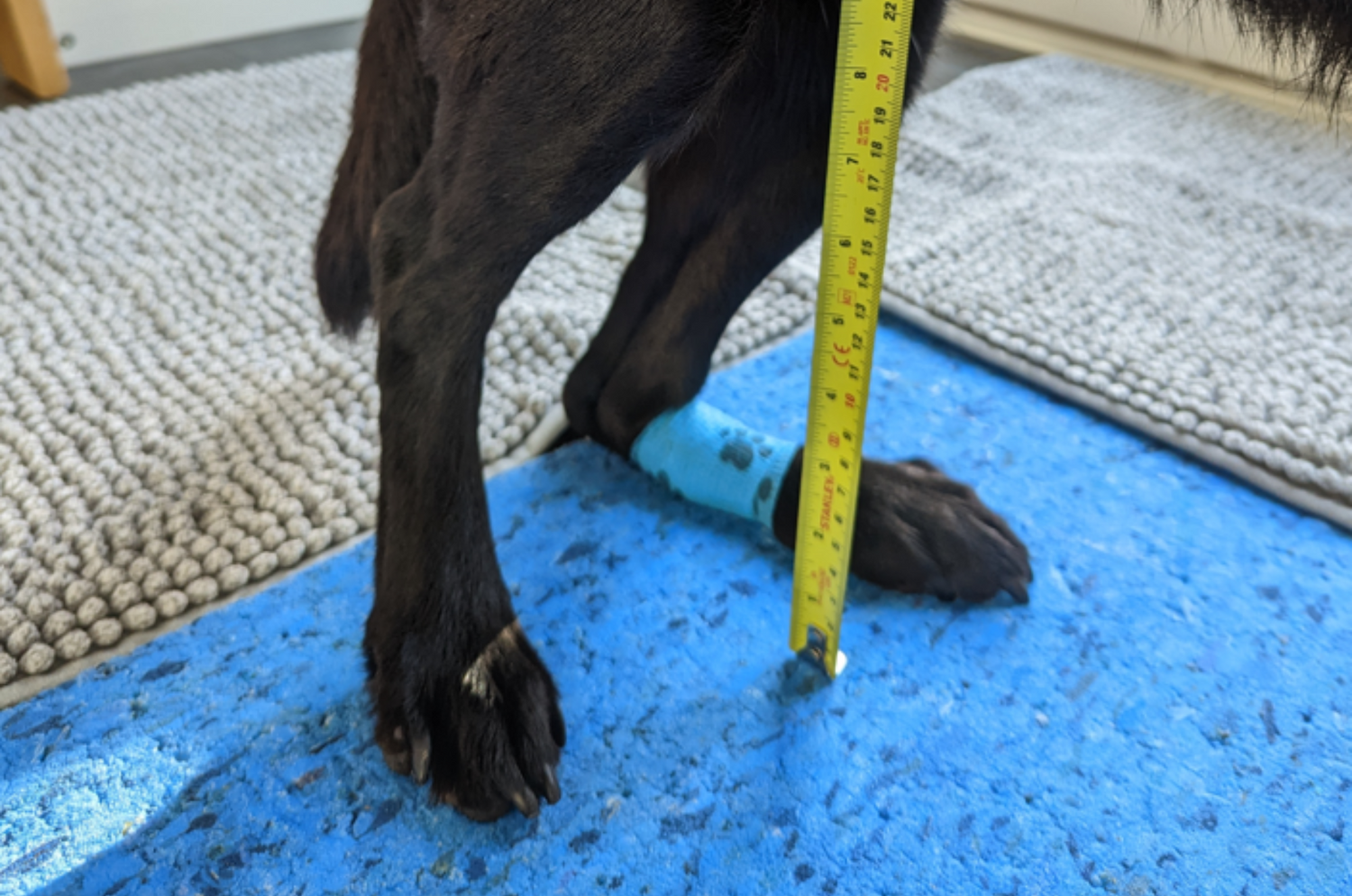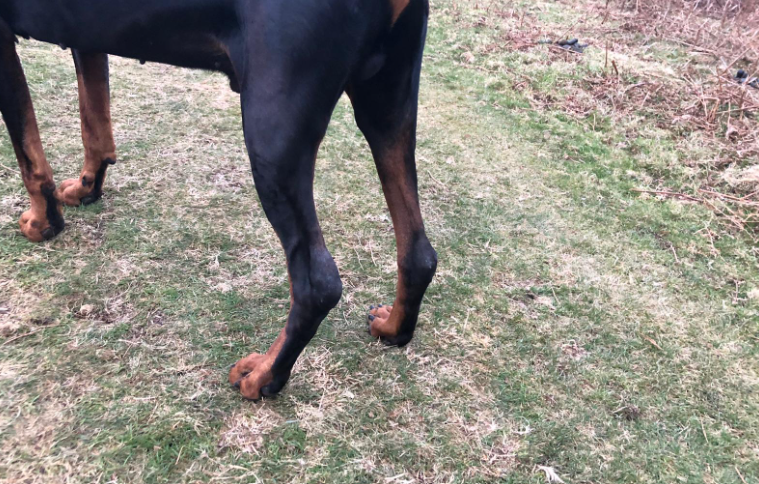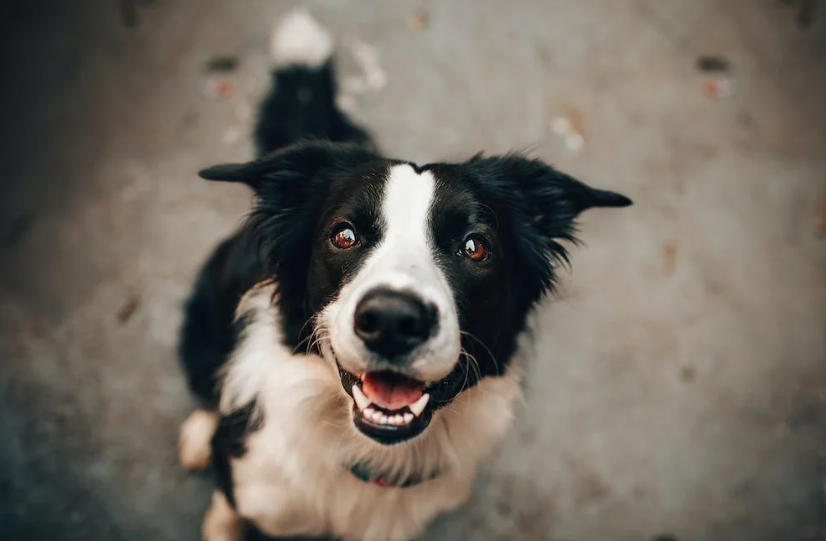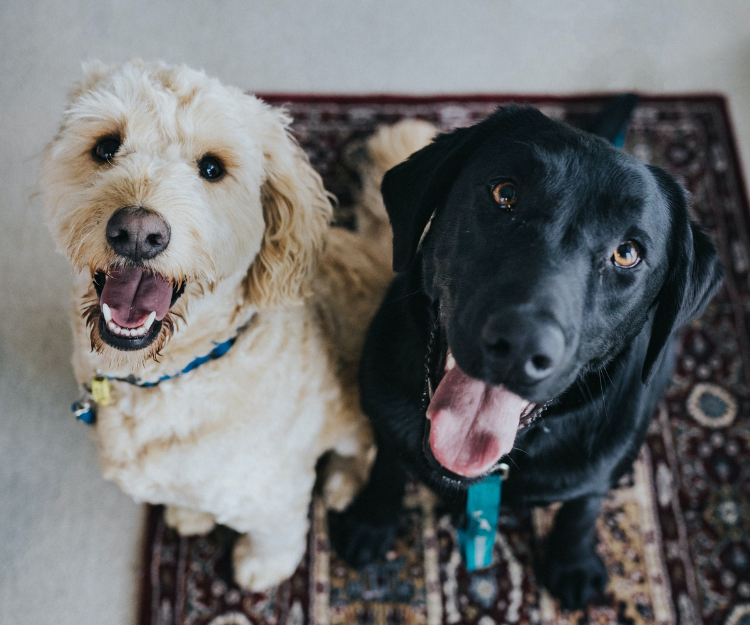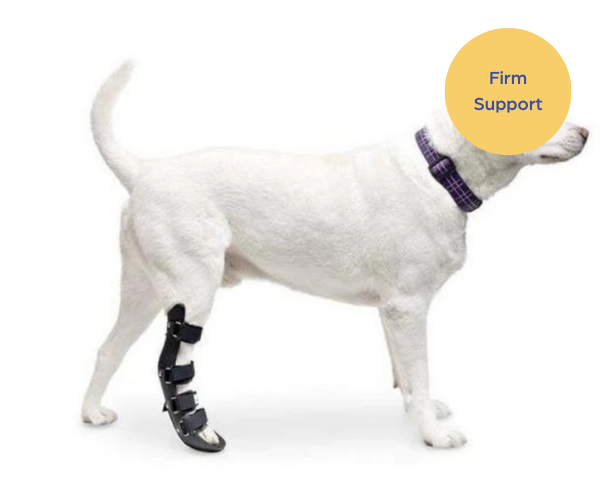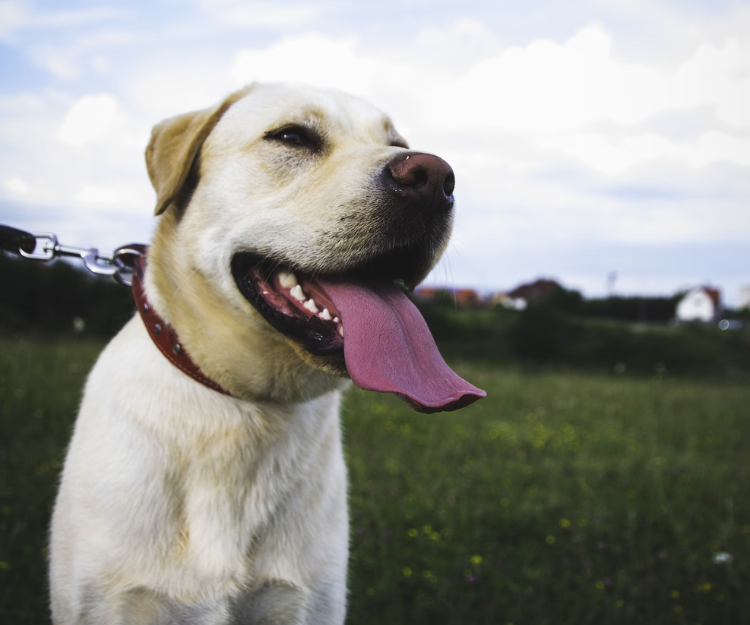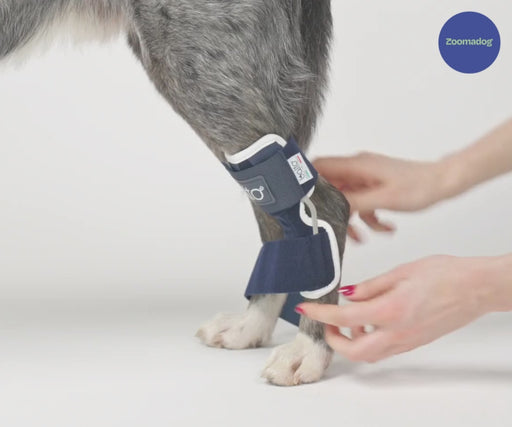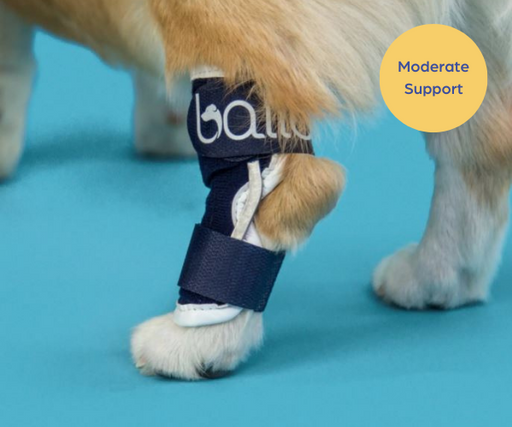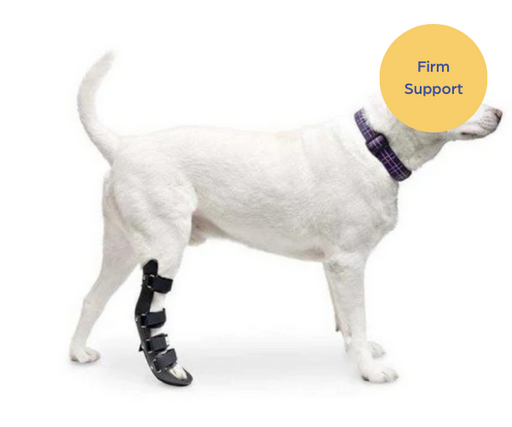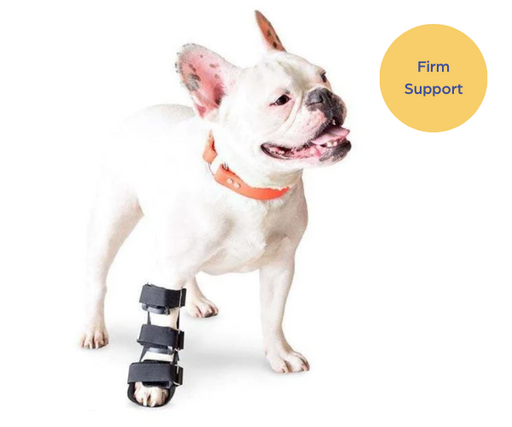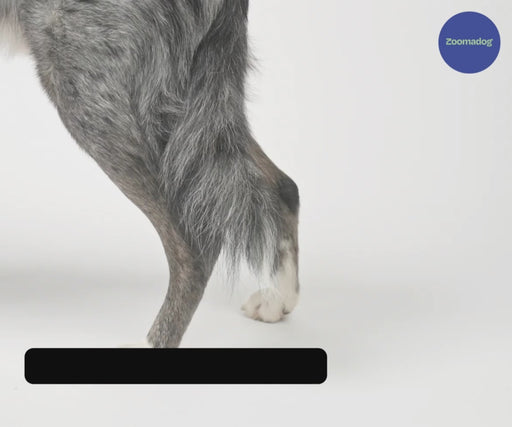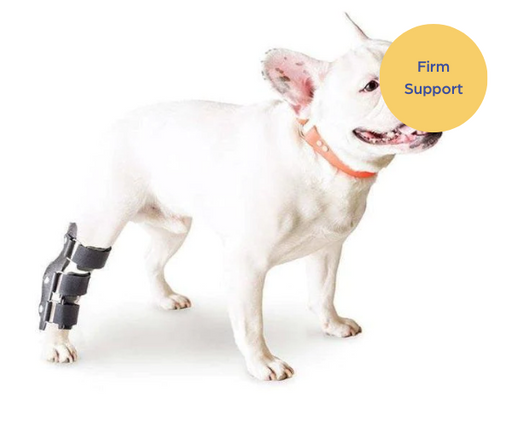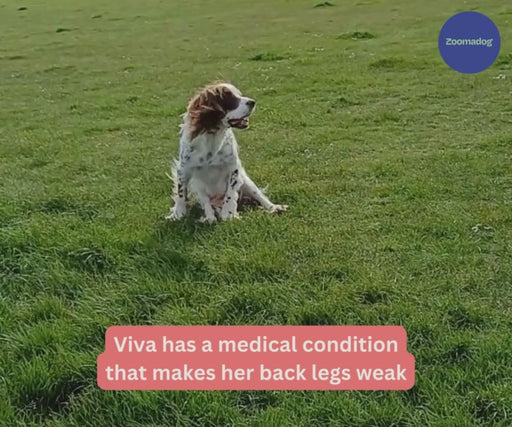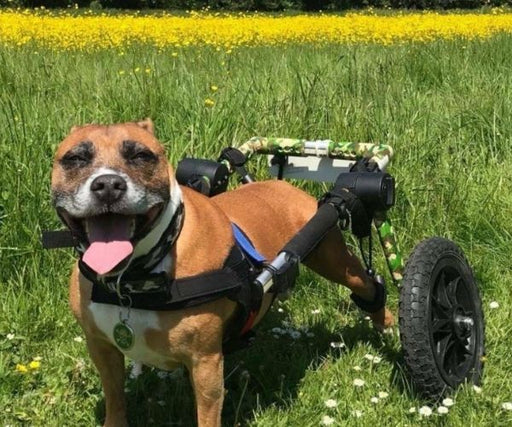What is an Achilles tendon injury?
The Achilles tendon (or the common calcaneal tendon) is a large band of fibrous tissue, that connects the calf muscles to the heel bone on your dog’s hind leg, it involves five different muscles. It plays a crucial role in allowing the extension of the hind leg, facilitating running, jumping and other every day activities of your dog. Tendon injuries in dogs can range from mild strains to complete tears.
If your dog has an Achilles tendon injury, it could be causing pain and discomfort, affecting their mobility and overall well-being.
Dog Achilles injuries occur in your dog’s back legs and can make your dog limp, unable to bear weight or completely change the angle of your dog’s back leg, often called a ‘dropped hock’. This happens when the Achilles Tendon totally ruptures. It causes your dog to walk ‘flat-footed’.
The Achilles tendon (common calcaneal tendon) actually consists of 5 different tendons, originating from several different hind leg muscles and inserting into the hock. These tendons form a large band of fibrous tissue, connecting your dog’s calf muscle to the heel (hock bones) in the hind legs.
The tendon works to extend the hock and flex the digits. It plays a crucial role in your dog being able to run, jump and take part in everyday activities. The tendon is, therefore a large band of fibrous tissue. It connects your dog’s calf muscles to the heel (hock) bones in the hind leg.

